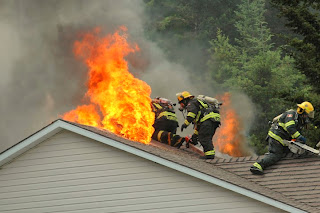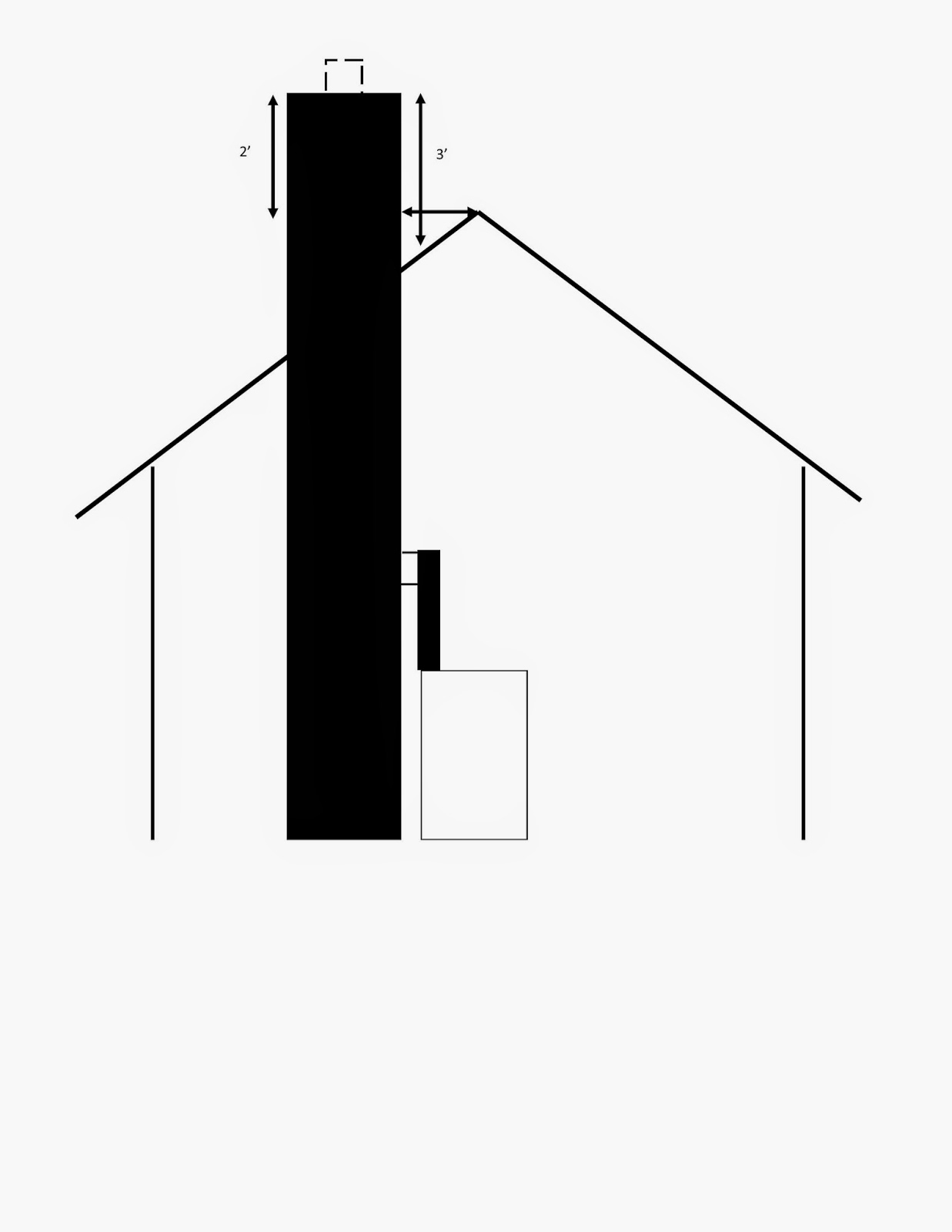As people close up their homes for winter, sealing every open
gap, and installing thermal windows and insulation, they may be doing more than
making their home energy efficient. They
might be doing things that can make their family ill.
 |
| A smoking fireplace is a sign of negative house pressure |
Houses need at least six air exchanges per day, according to
the Environmental Protection Agency. These air exchanges are necessary in order to
move out tobacco smoke, Carbon Dioxide, Carbon Monoxide, Nitrogen
Dioxide, Radon, and a host of other
chemicals such as Formaldehyde that off-gas from furniture, carpet and
woodwork. These air exchanges bring in
fresh air for the occupants to breathe.
Exacerbating the problem are appliances that take air out of
the house such as attic fans, range hoods, bathroom fans, clothes dryers, and
central vacuums. If the house is tightly constructed replacement air needs to
be introduced somehow.
Appliances such as furnaces, hot water heaters, fireplaces,
and wood-burning stoves need air for combustion, and they take house air for
this purpose. Open fireplaces are only
-10 - +10% efficient, and use heated air from the home, causing the furnace to
work harder. Even if an outside air
source is supplied to a fireplace in an attempt to use less house air, this is
often inadequate, and is arguably not the best solution. Cold air dumped on a hot fire cools it down,
causes it to burn inefficiently, and to produce more CO.
 |
| High efficiency fireplace by Regency |
High-efficiency gas fireplace inserts are approximately 75% +
efficient and use no indoor air for combustion. Wood-burning fireplace inserts
and freestanding stoves are generally 70%+ efficient and use much less house air
for combustion than traditional open fireplaces do. These are good choices
whether a home has inadequate air for combustion or not. Other methods to
improve fireplace efficiency include installation of glass doors, use of a
grate heater, and improvement in design.
A Rumford or Prior Fire style fireplace is a better choice than a
standard style fireplace because it uses less air and is more efficient.
Efficient fireplaces or inserts use less wood than standard fireplaces to
produce the same amount of heat, so an added benefit is lower energy cost.
Another problem that can occur in larger homes or homes that
are tightly constructed is unbalanced house pressure. According to Dr. David Penney, professor of
Physiology and Adjunct Professor of Occupational and Environmental Health and
Wayne State University, and creator of COHeatquarters.com, Carbon Monoxide (CO)
is the most commonly encountered and pervasive poison in our environment. Dr.
Penney believes that long term exposure to low levels of CO (even those that
don’t register on a CO alarm) are capable of producing many debilitating residual effects on the
human body. This is called chronic CO poisoning, or CO Poisoning Syndrome.
Symptoms of negative house pressure are moisture condensation
on cold surfaces, smoking fireplaces or wood-burning stoves, difficulty
lighting a fire in a fireplace, CO
backup from gas and wood appliances, back-drafting of appliances (and CO), CO
detector alarms go off frequently, and cold air infiltration through
leaks. Children and pets may be more
affected than adults. If a person feels ill when at home, but better when
outside the home, this is an indication that something is wrong with the house.
 Health effects associated with CO Poisoning Syndrome are
unexplained flu-like symptoms, headaches, dizziness, fatigue, confusion, joint
pain, muscle pain, chronic fatigue, vertigo, numbness, eye and nose irritation,
fainting, nausea, and in more serious cases, inability to wake up, asthma,
cancer, irreversible brain damage, or even death. Other symptoms include cognitive
and memory impairments, mood changes, depression, sensory and motor disorders,
and in more serious cases, seizures, balance problems, and tremors. These
symptoms can continue for weeks, months, or years after termination of CO exposure,
so it is imperative to assure good indoor air quality at all times at work and
at home.
Health effects associated with CO Poisoning Syndrome are
unexplained flu-like symptoms, headaches, dizziness, fatigue, confusion, joint
pain, muscle pain, chronic fatigue, vertigo, numbness, eye and nose irritation,
fainting, nausea, and in more serious cases, inability to wake up, asthma,
cancer, irreversible brain damage, or even death. Other symptoms include cognitive
and memory impairments, mood changes, depression, sensory and motor disorders,
and in more serious cases, seizures, balance problems, and tremors. These
symptoms can continue for weeks, months, or years after termination of CO exposure,
so it is imperative to assure good indoor air quality at all times at work and
at home.
Strategies to improve air quality:
2.
Maintain humidifiers and dehumidifiers and empty
water trays
3.
Replace air filters on schedule
4.
Turn on whole house fans or bathroom and kitchen
fans with doors or windows open occasionally in spring and summer (not during
cold weather)
6.
Install a whole-house ventilator to bring in
make-up air for appliances and fresh air to breathe
8.
Be sure clothes dryers are properly vented
outdoors and vents are cleaned twice per year
9.
Use a vented gas space heater or stove rather
than an un-vented gas appliance
10. Never
use kerosene heaters inside the house
12. Have
a professional CSIA Certified Chimney Sweep
inspect and clean furnace, fireplace, and wood stove flues annually and check for negative house pressure
13. Have
an energy specialist do a blower door test on the home, which will indicate
leaking areas and negative pressure issues. Some cities offer this service for free.
14. Be
sure to have a properly sized flue liner installed for a hot water heater if a
furnace is replaced and vented out the side of the house. The water heater will
no longer be able to vent on its own without the furnace and CO backup can
result
Sources:
----------------------------------------------------------------------------------------------------------------------
Marge Padgitt is the president of HearthMasters, Inc. chimney contracting company in Kansas City, MO. She is the editor of Wood-Fired Magazine, author of The Chimney and Hearth Pro's Resource Book and more books coming in 2016.



















